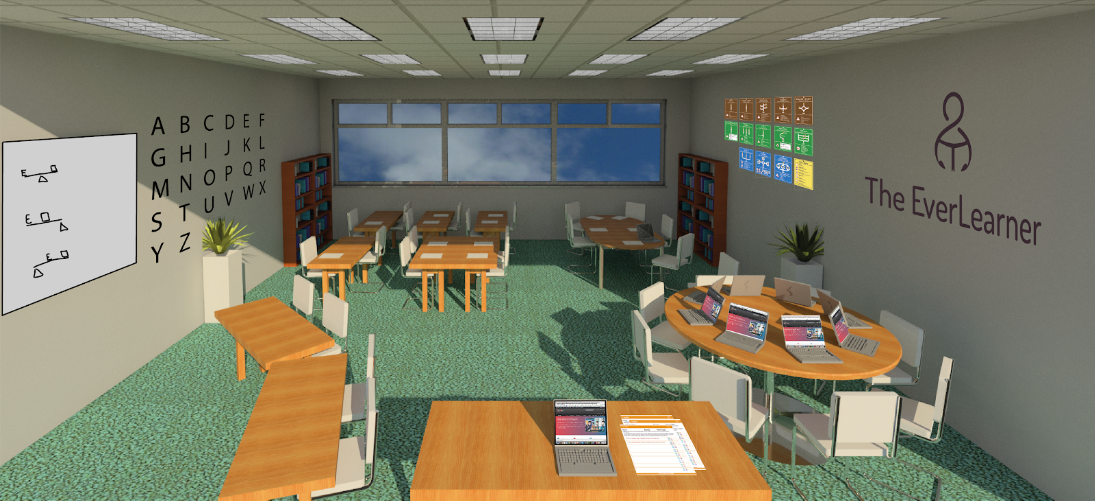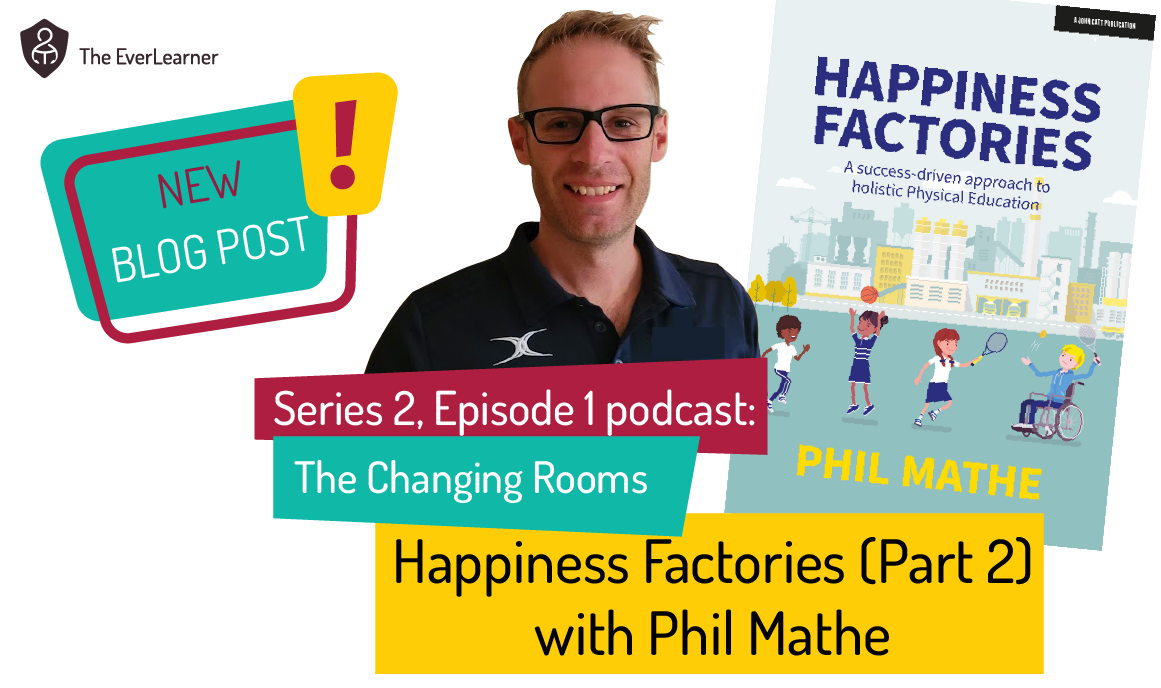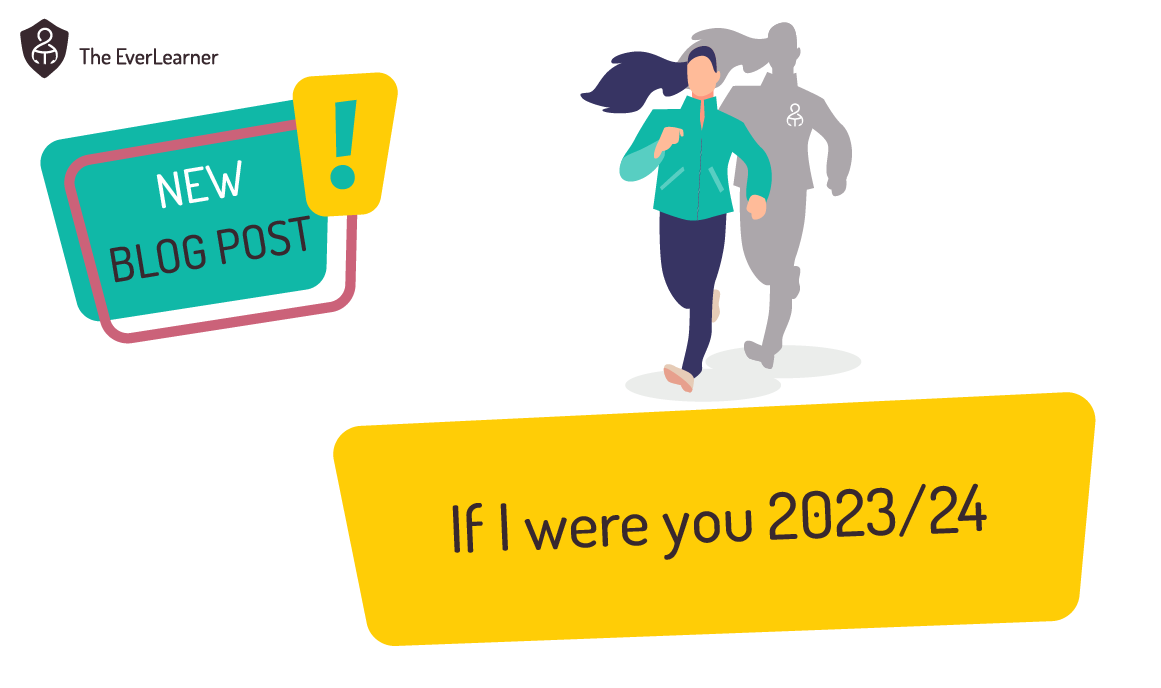Differentiation in my PE Classroom
In previous posts, I have written extensively about PE classroom formats and the rules that I apply in my own PE classroom. I have even published before on my own classroom format. This week, I want to extend my writing on those thoughts and experiences by explaining why I fundamentally changed my classroom format back in the early 2010s.
Before I get into this, I want to ask you something: When was the last time that you went against everything and everyone around you and followed a belief to its conclusion despite the potential consequences? Now, I’m not encouraging madness here. Please do not put anyone or anything in danger, but what I am going to write below is an account of fully committing to an idea, a dream even, and doing so in spite of external influences. I also want you to remember that this all happened back in 2010, a decade before Covid and at a time when smart-device-technology in classrooms was at a very early stage. I also want you to remember that I am ultimately writing about differentiation, not about classroom formats. The latter will always be a by-product of the former.
So, allow me to rewind you to the year 2010. Flo Rida, Rihanna and Eminem were smashing the charts. Women’s Football was still not a thing, in the main. The Commonwealth Games were held in Delhi and my own student, Becky, represented England in Gymnastics winning Gold in the team event . Meanwhile, in the commuter town of Farnborough, Hampshire, I was holding a meeting with a student and a parent in order to “invite-off” that student from my A-level course…
The student’s name was ✽Eddy and Eddy had achieved an E overall on the old AS course including a U in the summer exam and an E on the practical unit. In fact, Eddy was 1 UMS mark above a U overall on the course and, in circumstances such as these, it was our tendency to invite the student to pick a different course for their second year or, in the most compromised agreement, to repeat Year 1. This was the intention as I entered the meeting alongside my colleague Alan.
✽Fake name.
Before I get into the details of the meeting, let me tell you about my classroom. At that time, it was pretty standard: I taught stuff, we did worksheets, we practised exam questions and sometimes, I set homework. In terms of differentiation, it probably was pretty basic. Sometimes, I would set must/should/could targets but mainly, I taught to the middle and hoped that the group would adjust to what I had covered and set. I was a good explainer of concepts and I seemed to hold the attention of students quite well. Therefore, my model, to any other teacher’s eyes, would have seemed pretty conventional. Eddy came along and ruined all that!
So, back to the meeting. I had invited Eddy and his mum into my office, we had sat down around the little round table in the comfy area at the end of the office (that, incidentally, five years ago had been a staff toilet - no-one but me knew this!) and I was all set to work the conversation to where everyone agreed that a different course was the right thing for Eddy. It didn’t go that way. At the very start of the meeting, Eddy’s mum made a disclosure. She did so with great emotion and as she sat, speaking to me with tears gushing and head down whilst Eddy had his arm around her. In essence, she told me two things:
- Eddy’s father was an alcoholic and commonly acted aggressively towards Eddy’s mum.
- Eddy missed 35% of his Year 1 AS lessons not because he was evasive but because his duty to his mother meant that he stayed home and protected her. In fact, Eddy’s father’s aggressive tendencies were seemingly far less threatening with Eddy present.
This was quite a revelation and the dynamics of what was being described fitted exactly with my experiences of Eddy. He was a nice guy. He was honest. He was embarrassed too, although, clearly, he had no reason to be. The fact that he had passed the course at all was a miracle, albeit with an E grade.
So, I took a leap of faith and offered to support in any way that I could. I reassured everyone present that we would “find a way” and that we would make it work, although at this point I didn’t know how. Eddy’s mum had told me that future absences were likely so the core issue would not be easily resolved, therefore, a solution, of kinds, was required.
So, I want to ask you what you would do in these circumstances? How would you “get teaching to Eddy?” How would you ensure that a student in these circumstances move forward in their Year 2 studies whilst actively improving on the missed Year 1 knowledge too? Would you add Eddy into an AS class? Would you do 1-to-1s with him? Would you nod and hope for the best?
I came to the conclusion that the only actual solution was to:
Make the classroom available to Eddy from anywhere.
Now, in 2024, post-Covid and with Zoom and Teams and Google Meets a completely standard service in schools, this would have been possible but, in 2010, thankfully, this wasn’t a viable option. I was thankful because if it had been, I would have taken that option. But that option would have not addressed the issues with the AS gaps. So, I took a different approach.
In the weeks leading up to the meeting, I had been chatting about some possibilities of video lessons with a colleague of mine called Julien-Pierre. JP was a music technology teacher and, for different reasons, was interested in recording his teaching. We had looked at services such as Panopto but it was disturbingly expensive at the time and wasn’t viable. Coincidentally, the college I worked at had bought a bunch of iPads and was looking for teachers to experiment with them. “OK!” I said, “pass one to me.”
So, a few hours after the meeting, I had an iPad, intent to make videos for asynchronous learning and a student in need. I even ordered a stylus (remember them?!) from Amazon.
I made a few videos. They were s**t but I shared them with Eddy regardless! Here’s one of them:
But Eddy told me he liked them so I kept going. A few months later, I had recorded the entire AS course including about 150 videos. Now, I accept that this is not normal teacher behaviour. I am probably not “that normal”, to be honest with you. However, something interesting happened - Eddy told other students about the videos.
By Christmas of 2010, tens of students were accessing my videos regularly for self-study. I was working at a college with 190 students in the AS year and a further 150 students in A2. As it turned out, this was a beautiful, albeit accidental, testing ground.
I wrote a little programme that recorded which students had watched which videos. I then compared the video watching stats to the performance stats on our core assessment and found a correlation. Not only did students who had watched more videos add more value, but individual students who had watched individual videos, performed better on the questions from that topic that appeared on tests.
So, I kept going and by the time the year had concluded in July 2011, video viewing and tracking was an integral part of my own groups’ learning process. Furthermore, other teachers in the department had cottoned on to the movement and engaged. By 2012, the entire department was using videos and video tracking as a core feature of their learning and teaching programme.
Now, this article is not about asynchronous learning. If you go back to the title, it is all about differentiation. But here’s the thing: neither video… nor technology… nor automated tracking… was ever, and remains not, the objective. Rather…
I used video to change a core assumption in a classroom: Learning is transmitted from a teacher to students synchronously and in person.
Whilst this remains good practice in good classrooms up and down the country,
I had previously taken that assumption too far and formed this assumption: Learning is ONLY transmitted from a teacher to students synchronously and in person.
This is wrong! So wrong that it makes me upset just re-reading it to myself. In fact, I am going to take that statement to my most militant mind and write this down:
One of the most exclusive concepts that commonly goes unchallenged in our society is that learning is transmitted only once and is done so at the time of the teacher’s choosing.
Whilst you may like and dislike different aspects of what I am writing, I am very, very confident to write this down and to commit to it. It is one of the very few areas of life that I am ideological about: I believe, fundamentally, that I am right and I am prepared to stand by this statement. Eddy taught me that my classroom model was exclusive not because of a lack of differentiation but because my classroom was on my terms… the teacher’s terms. Now, we need classrooms. Don’t get me wrong. I am absolutely pro-classroom. I am classroom-philic, in fact, but a one-pace-fits-all, one-time classroom model was absolutely unacceptable to me by 2011 and is even more so today in 2024.
My journey continued. I made videos, I wrote code for websites (I am terrible at this by the way and, thankfully, I never do it anymore), I formatted mini assessment activities online and so on and by 2013, I had developed this thing called myPEexam. It was a website for my students that contained my videos, a little bit of video tracking and some simple assessment activities and reporting. Once again, looking back at it with 2024 eyes, it was s**t, but it worked! Entire cohort results improved and not just a bit… massively so. Why was this? Why did it work?
I believe that the follow factors made the impact:
- My physical, synchronous classroom remained intact. Nothing was “lost” or sacrificed.
- Teaching transmission was consistently excellent despite being a bit ugly and “finger-endy”. This applied across multiple groups too.
- Teaching transmission could be repeated and, when required, asynchronous.
- Learners chose the moment when they were ready for the transmission. They “hit play on their teacher” at moments when they were ready rather than when I, say, was ready.
- Assessment activities like quizzes and writing could be re-accessed and repeated until mastery was achieved.
- Learners were unable to get stuck or fall behind because of all of the above.
- Some learners could move forward at a faster pace than others and explore their course of study.
This my friends, this, is differentiation! It is differentiation built structurally into a programme of study not just bolted onto a non-differentiated framework. I had, accidentally perhaps, stumbled upon a classroom model that was fundamentally differentiated for everyone within it.
Now, I must stress that to begin with, my classroom and lesson time didn’t change a great deal. Then, during one A2 lesson a student came to my classroom and said, “James, do you mind if I get on with things whilst you are teaching because I have already watched your lesson on that?” In the very same lesson, Eddy, our friend from earlier, said to me “James, I’m going to quickly watch an AS lesson online as I’ve done today’s lesson already and I have my resit next week.” I was, therefore, left with a group of 18 students watching me teach, one going ahead and one going back to remediate on missed learning. I stopped my teaching halfway through my powerpoint and asked the group “How many of you know this already?” Eleven hands went up. “Would you prefer to move onto the next task?” Eleven heads nodded. I quickly restructured the room and finished my teaching to seven learners whilst thirteen continued at their pace.
Within a month, my classroom looked like this for 6/10 of my lessons, on average:

I still did 4/10 of my lessons in the more traditional structure but, the experiences described above spoke very loudly to both the learners and to me. Once again, you can read the finer detail of my classroom model in another post.
Life carried on. I taught and I reflected. I recorded videos and made websites. I wrote online assessment activities and quizzes. By 2014, I was forced to create a business that could service the demand of the wider usage of the PE community. Now, in 2024, my videos and my online offering in general are teaching over 500 students in every second of every day, on average. Exactly! 24 hours a day, every day, thousands of students are learning from my materials. Furthermore, my business The EverLearner Ltd is thriving and is on the verge of releasing a brand new service to the PE sector.
Conclusions and “What happened to Eddy?”
So, I have a few conclusions from this post. Firstly, have confidence in your beliefs and in your reflections. Authoritative voices around you may be authoritative in tone but, perhaps, less so in content. Be prepared to rebel if you have to - I did. Far more people told me it wasn’t possible than encouraged me. Some told me to stop. I ignored them.
Question what you are told but, most importantly, recognise your own biases and assumptions. It is very, very likely that elements of your classroom are as they are not because they are the best learning structures, but because they are assumed. Next time you walk into a/your classroom, question why about everything. EVERYTHING!
Finally, Eddy is well. He has his own family now including, the last I heard, two kids and a cat. We remain friends (online) - the typical liking of posts and congratulatory comments remind us both of the experience we shared. I am unsure if Eddy knows how important he is to me. I think he probably knows, but it would be weird if I told him so, it remains one of those things that goes unsaid. Eddy’s parents remain together and his dad is much, much better.
Eddy got a B-grade in A-level PE on results day. He missed the A-grade by 1 UMS point. Obviously, I convinced Eddy to have it remarked. I actually paid for it myself. The remark bumped his AS resit score up by 5 UMS points and Eddy finished with an A-grade. Getting that news remains one of the very high points of my career.
As always, thank you for reading what I write. When I write posts like this, I typically wonder whether anyone will be interested. But, what the hell! Here it is anyhow.
Have a lovely day.
James
%20Text%20(Violet).png)


